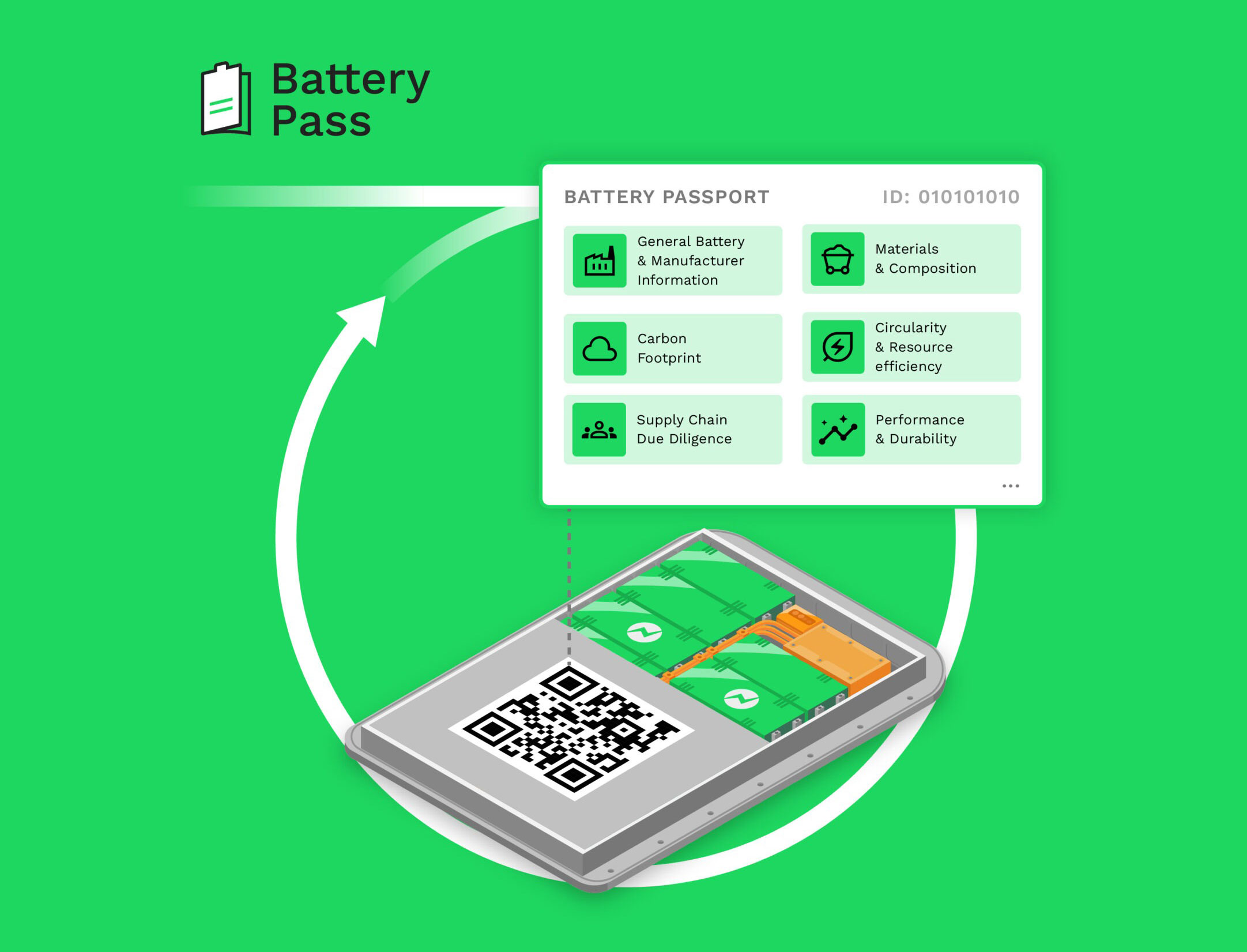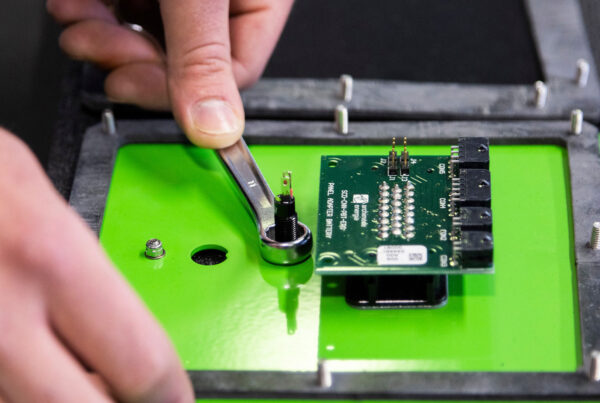At the heart of Europe’s energy transition, the Battery Passport stands out as a key instrument to ensure traceability, sustainability, and innovation in the lithium battery sector. Introduced under Regulation (EU) 2023/1542, the Battery Passport will become mandatory as of February 18, 2027, for electric vehicle (EV) batteries, light means of transport (LMT) batteries, and industrial batteries with a capacity greater than 2 kWh.
According to the official “The Battery Pass” initiative, this tool is a cornerstone for creating a transparent, digital, and sustainable battery value chain aligned with the EU’s environmental objectives.
What is the Battery Passport: structure and content
The Battery Passport is a mandatory Digital Product Passport (DPP) — a digital document designed to collect, update, and share standardized lifecycle data for each battery. It contains structured, up-to-date, and verifiable information accessible via QR code directly applied to the battery or the device it powers.
The passport is based on the technical framework defined by DIN DKE SPEC 99100:2024, which organizes data into three layers:
- Core Layer: general data (e.g., unique ID, manufacturer, category, market entry date)
- Domain Layer: battery-specific data (e.g., chemical composition, capacity, environmental impact)
- Extension Layer: optional or national fields to meet local or industry-specific needs
The more than 90 data attributes are grouped into 7 main clusters:
- General Information
- Labels and Certifications
- Carbon Footprint (LCA values, CO₂eq emissions)
- Supply Chain Due Diligence
- Composition and Materials
- Resource Efficiency and Circularity
- Performance and Lifetime (SoH, SoC, charge/discharge cycles)
This structure ensures semantic and technical interoperability through the use of standard ontologies (ECLASS, IEC 63394) and RESTful APIs.
Regulatory requirements and involved battery categories
The Battery Passport will be mandatory from February 18, 2027, for the following battery categories:
- Electric Vehicle (EV) batteries
- Light Means of Transport (LMT) batteries such as e-bikes, e-scooters, and e-mopeds
- Rechargeable industrial batteries with a capacity greater than 2 kWh
The European Commission is expected to publish the final technical guidelines by August 2025.
The 12 use cases: strategic value for the battery value chain
The Battery Passport enables a range of impactful use cases, grouped into two categories:
Direct use cases (enabled by mandatory data):
- Reliable ESG communication
- Informed and transparent purchasing decisions
- Simplified and predictive maintenance
- Risk assessment for battery transport
- More efficient recycling processes
- Accurate determination of residual battery value
- Easier trading of used batteries
Potential use cases (requiring additional infrastructures or data standardization):
- Automated reporting and data collection
- Improved end-of-life collection rates
- Sector-wide benchmarking
- Market intelligence and battery analytics
- Public policy and regulatory support
According to estimates from The Battery Pass, the adoption of digital battery passports could reduce emissions by up to 1,300 kt CO₂eq/year and unlock over €1.2 billion/year in additional revenue from improved recycling.
Industrial vs LMT Batteries: specific challenges and opportunities
The application of the Battery Passport differs significantly between industrial and LMT batteries, due to their technical nature and use context.
Industrial Batteries
Often heterogeneous in chemistry and application, and frequently lacking connectivity, these batteries benefit from static digital twins that can be manually updated. The DIN SPEC model allows for minimal but sufficient traceability to support recycling and end-of-life management even in offline contexts.
LMT Batteries (e-bikes, e-scooters)
These devices face challenges due to limited connectivity during use. However, the Battery Passport can facilitate:
- Scheduled maintenance
- End-of-life collection
- Voluntary functions like anti-theft via QR code or NFC
The DIN model also provides tiered data access levels to protect user privacy while ensuring traceability by authorized operators.
Implementation challenges and possible solutions
The introduction of the Battery Passport presents several key challenges:
- Technical: data standardization, system interoperability, cybersecurity
- Economic: high initial setup costs, lack of internal expertise (especially for SMEs)
- Organizational: data governance, integration into existing business processes
A study from The Battery Pass consortium shows that, for EV battery producers:
- 55% of the implementation effort relates to data management
- 25% to operational processes
- 20% to hardware/software integration
Recommended solutions include:
- Adoption of DPP-as-a-Service platforms aligned with DIN DKE SPEC 99100
- Investment in training and participation in sector-specific consortia
- Use of federated data infrastructures, such as IDS (International Data Spaces) and Gaia-X, to ensure data sovereignty and control throughout the battery value chain
Technical architecture: the arrow / NXP / AWS case
In October 2025, Archimede Energia participated in a webinar organized by Arrow, which showcased a complete Battery Passport implementation developed by NXP using AWS Cloud infrastructure.
Key Components:
- BMU with S32K358 MCU: compliant with ASIL-D standards
- Secure Element (NCJ37-BMS): for cryptographic security, digital identity, and secure boot
- Passive NFC module: allows access to essential data without battery power
System Architecture:
- The BMU collects critical data (SoH, SoC, temperature, cycles) and transmits it securely to the cloud
- A digital twin of the battery is hosted in the AWS environment, accessible by authorized stakeholders
- The system ensures complete traceability, supports predictive maintenance, and integrates with Battery Passport data fields
This implementation meets the EU’s regulatory requirements and anticipates future cross-sector DPP applications.
The Battery Passport as a catalyst for recycling innovation
By integrating detailed technical data, the Battery Passport becomes a powerful tool to improve recycling processes:
- Design for recycling: manufacturers can optimize designs based on recyclability data
- Material identification: simplified dismantling and recovery of valuable elements
- Automation: potential for robotic disassembly and digital verification
- Direct recycling processes: leveraging accurate chemical composition for reprocessing
By 2030, over 11 million tons of batteries will reach end-of-life in Europe. Today, less than 5% are efficiently recycled. The Battery Passport aims to reverse this trend through digitization and transparency.
Archimede Energia: a responsible and innovative partner
As a specialist in high-performance lithium batteries, Archimede Energia is proactively aligning with the new European regulatory framework. Our battery systems are already designed to:
- Support Battery Passport integration
- Enable remote monitoring via advanced BMS and cloud connectivity
- Comply with the DIN SPEC 99100 model
- Facilitate second-life applications and responsible end-of-life management
Through partnerships with technological leaders such as Arrow and NXP, Archimede Energia contributes to the development of a secure, interoperable, and circular battery ecosystem.
Digital, Circular, Transparent
The Battery Passport marks a turning point for the battery industry in Europe. It fosters greater transparency, strengthens circular practices, and opens new opportunities for innovation.
Thanks to the EU Regulation 2023/1542, and the support of technical standards like DIN DKE SPEC 99100, the Battery Passport is set to become a pillar of the green transition.
Archimede Energia is ready to support manufacturers, integrators, and stakeholders in this transformation, providing cutting-edge lithium battery solutions designed for tomorrow’s regulations.
Are you looking for a solution ready for the new era of digital batteries? Contact us.






